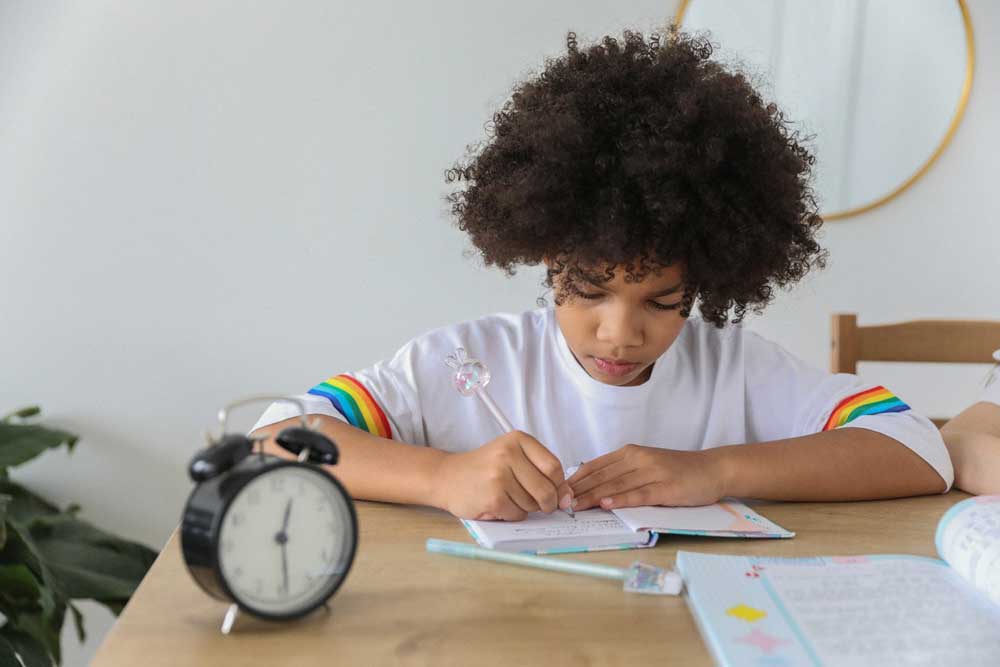According to a 2019 study, there is a correlation between gratitude and happiness among kids. Meaning, instilling gratitude to your kids lets you raise happy kids.
Aside from that, your kids can also reap the following benefits:
- Higher level of optimism
- Improved sleep
- Resilience and enhanced coping abilities
- Improved self-esteem
- Less aggression
How can you teach your kids to be grateful? Having a gratitude journal can help.
Gratitude Journal for Kids
There are many ways to teach gratitude to your kids. One of them is starting a gratitude journal.
Having one allows your children to notice things they should be thankful for, no matter insignificant it may seem. And there are reports that people who recognize people and things they should be grateful for are happier.
Being grateful also improves relationships. That’s because they are encouraged to see the good in people.
Other than gratitude, journaling also teaches your kids to be resilient and improve their writing skills.
That said, here are six tips on how you can help your kids start their gratitude journal:
1. Find the Right Journal
There are different types of journals for kids. Some are meant for a brain dump, while some are meant to instill a life skill.
But what’s important is that it is age-appropriate. It should also be functional while something that your child will enjoy using.
Some kids prefer a journal where they can draw and some stickers. Some enjoy writing more than decorating their journal. Whatever you choose, the journal must encourage your child to express his creativity.
2. Pick the Right Tools
Aside from an age-appropriate journal, it would be nice to have the right tools. As to what tools you need will depend on what fancies your kids.
As mentioned earlier, some kids prefer to daw on their journals. Hence, he or she might need drawing materials like brush and watercolor. On the other hand, some kids prefer to decorate their journals with stickers and washi tapes.
Regardless of what your kids prefer, it is best to ask your kids or shop with them.
3. Use Journal Prompts
There are days when your kids are clueless about what they would want to write about. This is where journal prompts could come in handy.
But instead of asking the usual “What are you thankful about?” consider sprucing up your prompts. Here are some idea:
- Name one beautiful thing you saw today.
- What made you feel happy today?
- Describe your favorite toy.
- What good deed did you do today?
- Tell us about your school lunch and what you like about it.
These prompts allow your kids to understand what gratitude is. After all, being grateful is more than just saying “thank you.”
4. Read a Story About Gratitude
A great source of journal prompts would be bedtime stories. It is also an exciting way of teaching your kids how gratitude looks like.
We recommend that you add these books to your reading list:
- Thankful by Eileen Spinelli
- Bear Says Thanks by Karma Wilson and Jane Chapman
- Don’t Say a Word Mama by Joe Hayes
- I am Thankful by Suzy Capozzi
- Those Shoes by Maribeth Boelts
The stories listed above also teaches your child about selflessness, appreciation, and generosity. Reading bedtime stories is great for expanding your kids’ vocabulary, as well.
5. Use Conversation Cards
If you run out of bedtime storybooks, consider using conversation cards.
Conversation cards are meant to encourage children to open up. It lets you start a conversation with your kids while understanding their thought processes.
Regardless, you can also use these conversation cards as journal prompts.
6. Journal Together
Another excellent way to encourage your kids to write a journal is to do it with them. Doing so allows you to set a positive example.
We suggest setting aside a time where you can accomplish your gratitude journal together. Perhaps after you freshen up to get ready for bed. You can also discuss your journal entries while you are at it.
Doing so allows you to spend quality time with your child while further instilling gratitude to him.
Start a Gratitude Journey With Your Kids
With all that’s happening globally, it would help that we have something to remind us of the right things. And being grateful for what we have allows positivity in our lives.
However, gratitude can be a tricky concept to teach your kids. That’s why we should not set our expectations too high
But with the tips we have listed above, explaining and showing what gratitude is to your kids can be a breeze. You are also helping your kids develop essential life skills and good habits. And these are skills and practices that they can bring as they grow.
Moreover, journaling with your kids is a great way to spend quality time with them.
Are you ready to start a gratitude journal with your kids?

